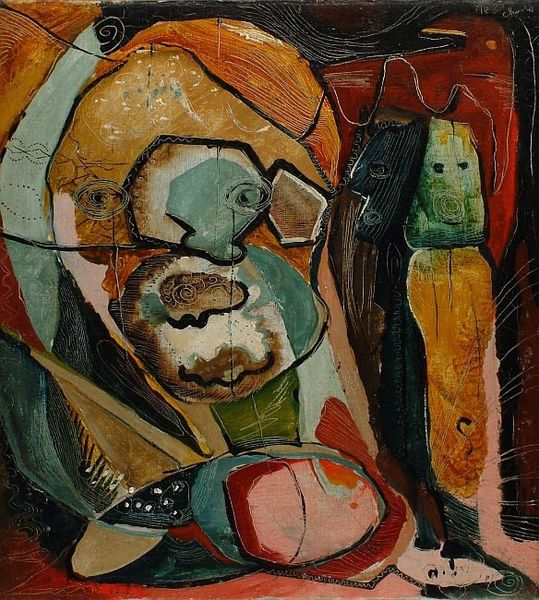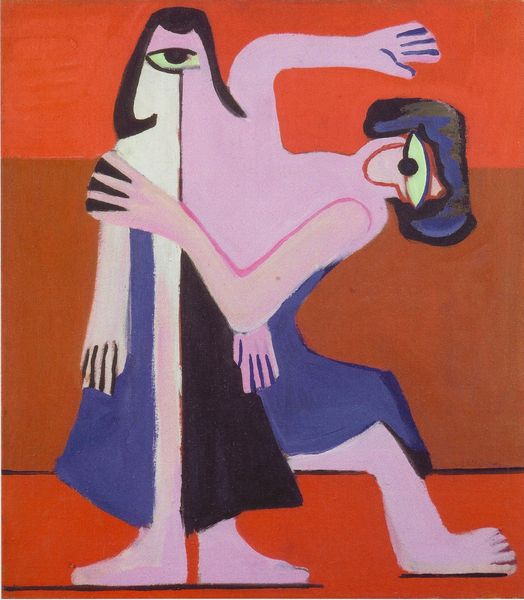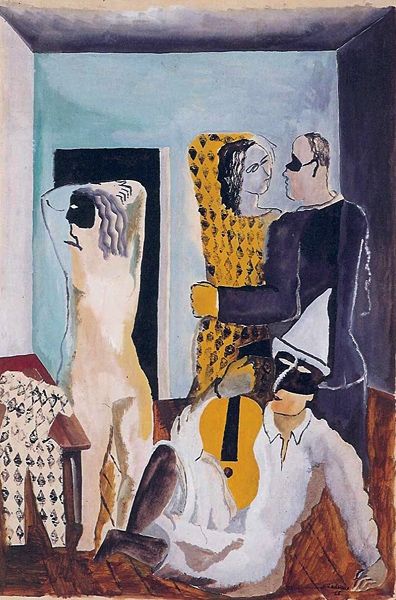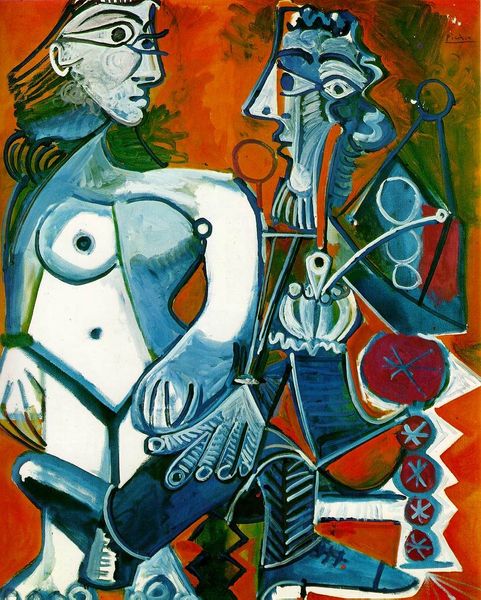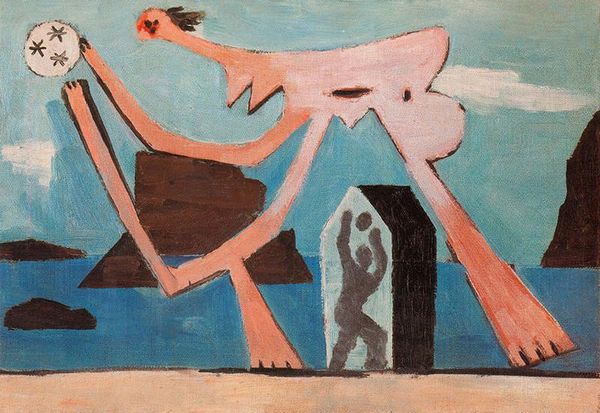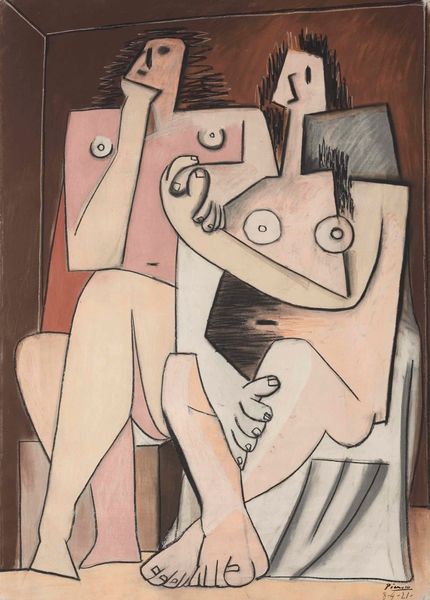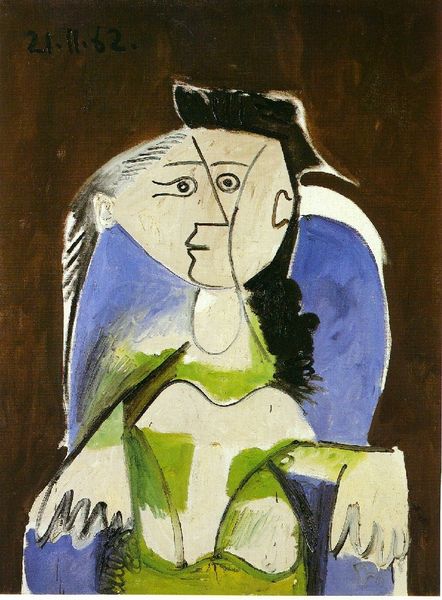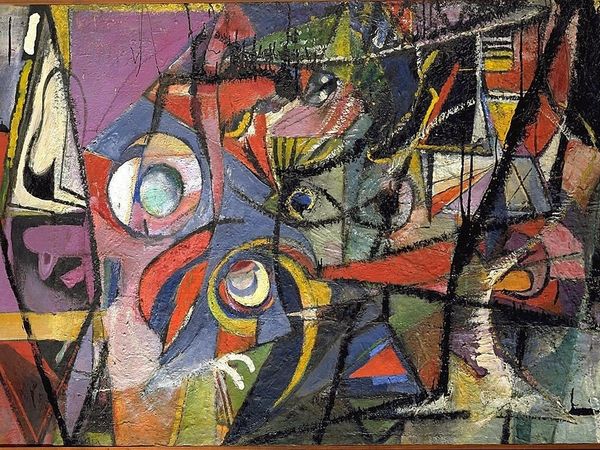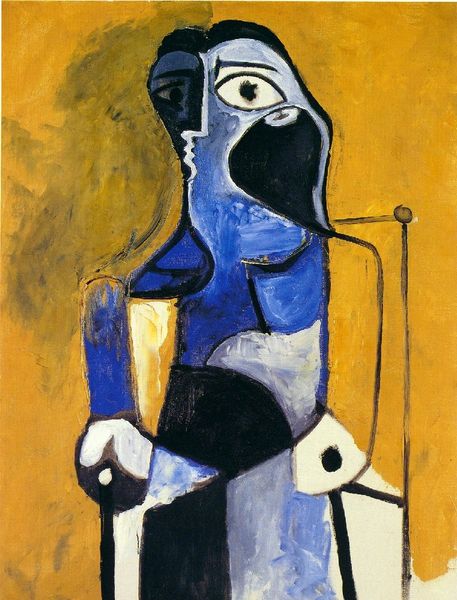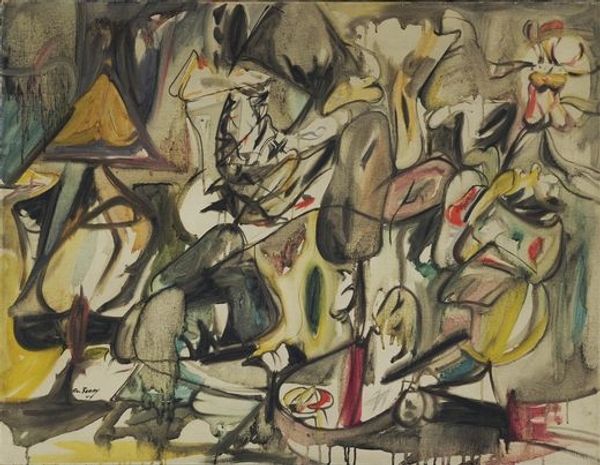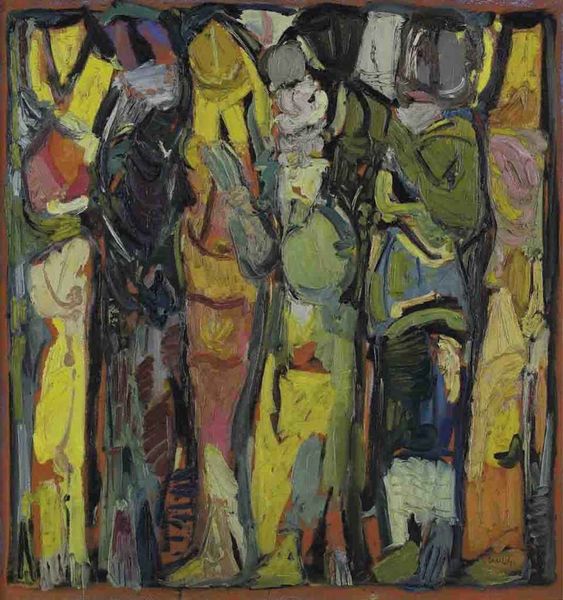
#
cobra
Copyright: Corneille,Fair Use
Editor: So, here we have "Couple et pigeon," an oil painting created by Corneille in 1949. The figures feel… almost confrontational, with these very stylized, angular faces staring out at the viewer. What do you see in this piece? Curator: Well, beyond the expressionistic style, which, as you say, certainly projects a directness, I think it's crucial to consider the socio-political climate of 1949. Post-war Europe was grappling with rebuilding, both physically and emotionally. How do you see this context reflected, or perhaps refracted, in Corneille's imagery? Editor: That's interesting. The slightly distorted features, the almost unsettling gaze... Could that be a representation of the anxieties and uncertainties of that era? Curator: Precisely. Consider, too, the inclusion of the pigeon. Pigeons are often symbolic of peace, but here, with its simplified form and somewhat rigid positioning, it almost seems like a forced symbol, perhaps questioning the very idea of easy resolution. How do museums typically display this piece: in a post-war collection, a survey of expressionism, or elsewhere? The context heavily shapes interpretation. Editor: I see your point. The museum usually places it within a collection focusing on the influence of social upheaval on artistic expression. It makes you consider how hope and disillusionment can be intertwined. Curator: And the colours? The almost jarring juxtaposition of softer and harsher tones – what story does that contribute? This deliberate imbalance in itself creates emotional tensions, doesn’t it? Editor: Absolutely. I'm starting to appreciate how much historical and social context can deepen our understanding of even the seemingly abstract elements within the painting. Curator: And hopefully, encourages further examination beyond face value. It truly brings history and emotions in an amazing exchange to the public through paintings like this.
Comments
No comments
Be the first to comment and join the conversation on the ultimate creative platform.
